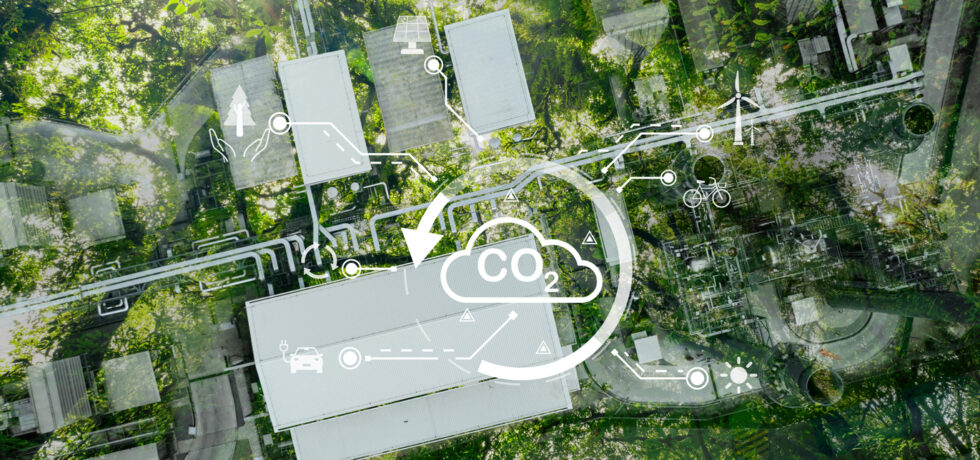Category
- Sustainable Construction
As part of the U.S. government’s Investing, the U.S. Department of Energy is investing $20bn to clean up U.S. industries. The commitment comes alongside a substantial carbon reduction target and is a significant part of broader efforts to mitigate climate change impacts and advance sustainable industrial practices, particularly in the highest-emitting sectors, with cement and concrete, chemicals, refining, and iron and steel topping the list.
In this article, we’ll explore the driving forces behind the U.S. commitment and some ways concrete industry stakeholders — designers, producers, and contractors — can benefit from this investment.
The Push for Decarbonization in the Concrete Industry
After water, concrete is the most used material on the planet with 14 billion cubic meters produced annually to build roads to bridges, tunnels to homes, and hydropower installations to flood defenses.
However, the concrete industry is also a major contributor to climate change, primarily due to the high CO2 emissions from cement production. Cement production accounts for about 7% of the world’s CO2 emissions.
The U.S. government is hoping its investment in transforming the sector will meet increasing consumer and corporate demand for sustainable products and enhance U.S. competitiveness by building more sustainable industries. The initiative’s goal is to cut emissions by 14 million metric tons annually, equivalent to removing the emissions from 3 million petrol-powered cars each year.
The Need for Sustainable Solutions for the Concrete Industry
Three-quarters of the infrastructure that will exist in 2050 has yet to be built. That means that proven solutions that exist today will have an outsized impact on reducing embodied carbon emissions from this new infrastructure.
Managing and reducing the embodied carbon of new infrastructure has to happen quickly — we can’t wait for a “silver bullet” solution to come to market. The good news is that efforts are already underway across the entire value chain to decarbonize cement and concrete.
This is happening across three areas:
- Cement Manufacturing: Upstream we’re seeing new alternative fuels to replace coal in the kiln and carbon capture technologies begin to emerge.
- Concrete Production: Novel supplementary cementitious materials (SCMs), new additives like Hard-Cem, and carbon mineralization are being adopted.
- Design and Construction: New construction methods, performance-based designs, or lighter-weight buildings are reducing the amount of carbon-intensive materials used.
Kryton’s Sustainable Concrete Solutions
While the U.S. government’s investment is a promising step towards industrial sustainability, the success of such initiatives will rely heavily on the adoption of advanced materials and construction practices.
Kryton’s products, including Hard-Cem and Krystol Internal Membrane, present a viable pathway to achieving ambitious decarbonization goals today.
Hard-Cem, the abrasion and erosion-resistant admixture, leads to more sustainable concrete in two ways:
- Enhanced Durability: By increasing concrete’s resistance to wear and tear, Hard-Cem extends the life of concrete structures, which means less frequent replacements and repairs, thereby reducing the embodied carbon over the lifespan of a structure.
- Reduced Cement Use: Hard-Cem allows for lower cement content without compromising structural integrity, directly cutting down on the carbon emissions from one of the most emission-intensive components of concrete.
Krystol products also add durability and longevity to concrete by protecting it against chemical attacks and the subsequent corrosion of reinforcing steel. This ensures structures remain in place longer, requiring fewer carbon-intensive repairs or replacement.
The Future of Construction: Building a Sustainable Legacy
As we look forward, the integration of innovative solutions like Hard-Cem will be instrumental in transforming the construction landscape — resulting in better products that are both best in class and environmentally responsible.
The challenge now lies in scaling these solutions to meet the demands of a rapidly growing global construction market, expected to double the current building stock by 2060. Embracing sustainable innovations will be key to building a legacy of durable, low-carbon infrastructure.
As the industry moves forward, Kryton remains committed to contributing to the decarbonization of the construction sector through continuous innovation and collaboration. By supporting policies and practices that emphasize sustainability, we help pave the way for a greener, more resilient future.
For more insights into sustainable construction practices and to learn how Kryton is making a difference, contact our team.



